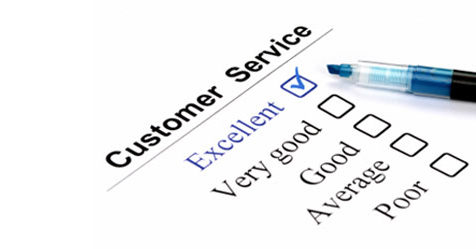For many building service contractors, there is a complete lack of discipline in approaching the customer during the renewal process, especially if a cost increase is needed. However, it is important to create value in taking an organized approach to the renewal process. This is a process that must permeate your corporate culture.
The best way to value the importance of creating a systematic approach to the renewal process is to compare it with the cost-benefit ratio of generating new business. In that regard, it is safe to say that all direct, indirect, and associated costs to create a customer are investments toward future growth. Your cost of servicing an existing customer is built into your price; however, marketing and sales is an additional cost carved out of overhead.
While last month’s Contractor Success article primarily referred to customer relations, this month, we will focus on integrating the customer renewal process into your corporate strategy. We will also compare low-performance organizations to those that embrace high performance as part of their culture.
The Approach of the Low-Performing Service Provider
In this type of organization, management at the top does not have a good grasp of its overall operation. Muddled organizational dynamics preclude effective systems design and application. The corporate culture is in disarray without a concise strategic direction; therefore, managers have to fend for themselves.
The worst thing we have seen in low-performing organizations is the complete absence of structure and consistency. They constantly overreact to the customer instead of developing a well-planned service approach. There is too much emphasis on price exclusively, and very little emphasis on systems to deliver and support quality initiatives.
Unlike the leadership of the high-performing organization, the low performer has created barriers to the retention process.
They place an overwhelming focus on low price. This creates a morbid fear of a price increase or even a discussion about one.
They have a habit of leading with price while selling and too quickly reducing their quote. This establishes a customer base that is difficult to service due to low margins, thus overburdening a thin support organization.
They don’t use a systematic approach and shoot from the hip. This organization prides itself on quick response to customer complaints without realizing how well-defined quality practices could reduce the enormous frequency of complaints. Unfortunately, the customer figures it out first.
Here are some signs of an organization that doesn’t take a systematic approach:
- It misses contract renewal dates, perhaps for two or three years.
- Training is not highly valued.
- The organization usually experiences high customer turnover. This places a huge pressure on new business requirements.
When low performers cannot renew a customer, they usually part ways assuming there is no future relationship.This is not true of high performers; they have a history of leading customers back.
The Approach of the High-Performing Service Provider
A cleaning contracting company that has high-performing leadership and management has built an organization that focuses on clarity of responsibility and expects well-defined results. This organization understands the importance of an effective corporate culture.
The company also emphasizes the value of the customer, and can demonstrate this in numerous ways:
Make the strategy for customer retention a part of daily life. Document the strategy, including specific responsibilities and activities, individuals who are involved, and timelines. The goal of the enterprise is profit; it cannot happen without strong customer retention.
Create a strategy with flexibility. The actual implementation of the strategy must relate to different types of facilities, contractual agreements, and unique customer history.
Deliver positive results. High-performance organizations expect positive results. That is, the price may be reduced, but not the gross margins—that comes last. These organizations may introduce new services and consider new systems, products, or equipment for improved results. They get the customers talking within the confines of the purpose of the process, allowing for options.
Gather information about the customer. This is done through regular customer service. Gather it for months prior to designing the renewal plan, so as to employ past experiences. You can do this by holding customer improvement meetings during the contract year to maintain the proper focus of the customers’ concerns. These meetings should have one focus, to ascertain the service is on track, and one goal, to gain a bona fide referral.
The customer improvement meetings must contain organized sessions supported by customer acceptance on a predetermined frequency. This will not happen with all customers.
Develop a well-thought out timeline. The renewal strategy starts by setting up the customer with a foundation for customer service. To do this:
- Establish customer access for emergencies and other requests.
- Set frequencies for service visits.
- Design the customer agreement to include key steps toward renewal.
Your renewal strategy timeline should include a 120-day plan that begins 120 days prior to the contract anniversary date.
- Start by identifying those customers that are up for renewal.
- Prepare a financial review within five days.
- Notify key service personnel within your organization of the time frame and key activities.
- Take action to determine the satisfaction level of the customer.
- Schedule an evaluation of all elements that impact customer service delivery.
- Approximately 90 days out, engage in negotiations.
- About 60 days out, gain agreement and close out competition.
- If unsuccessful, send the customer file to sales for future targeting.
- Celebrate all renewed service agreements.
The high-performance organization identifies those customers it is best structured to service and retain. This is not possible in all marketplaces.
Executing Your Plan
It is not difficult to understand the difference between high- and low-performing organizations. We all have to confront reality; the marketplace is in turmoil, requiring all organizations to manage effectively.
There are vast differences among organizations in the cleaning industry due to size, markets served, geography, and management. However, the way the organization is led will determine its continued existence or demise.
When you really think about it, the successful renewal of a customer with a justifiable price increase to cover cost creep is becoming an art form.
It all comes down to this: Confront the reality of your situation, create a plan, solidify your strategic intent, and execute your strategy.


